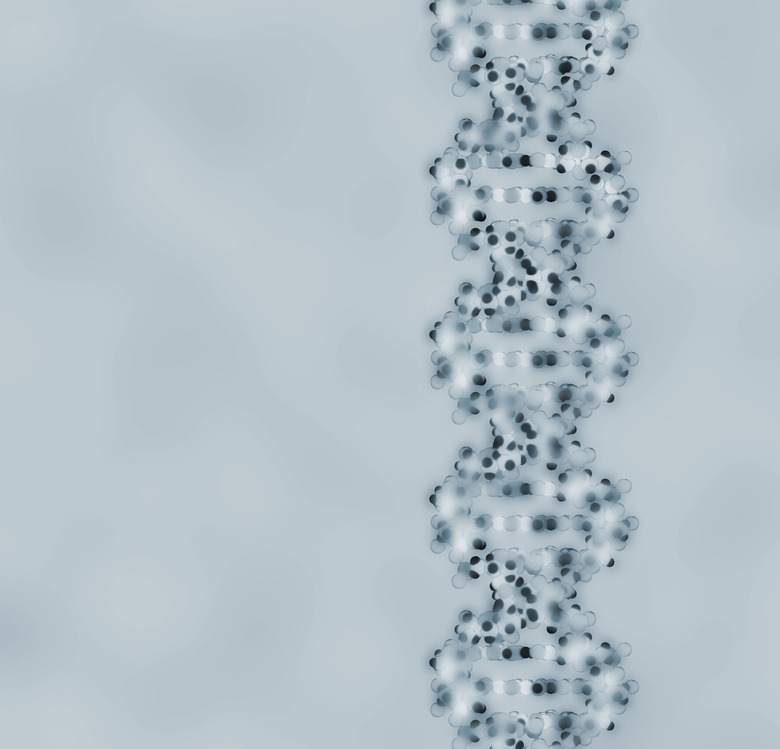How Is A Cell's DNA Like The Books In A Library?
The major role of deoxyribonucleic acid is to provide the information for the production of proteins that are responsible for our structure, carry out life sustaining processes and provide the necessary compounds for cellular reproduction. Just like an instructional or "how-to" book found at your local library, the information held within a DNA molecule is organized into sections and can be broken down to letters that code for different commands depending upon their sequence. Keeping with the library book metaphor, DNA is also stored neatly into chromosomes with molecules similar to a book's bindings.
Letters and Words
Letters and Words
DNA consists of the nitrogen bases adenine, guanine, cytosine and thymine. These bases are usually abbreviated as A, G, C and T, respectively. Just as in a book, these letters are grouped in a specific order to communicate a particular idea or task. These orders are written in the language that messenger ribonucleic acid (mRNA) can understand, which is the molecule responsible for making a ribonucleic acid (RNA) template of a specific gene in the DNA strand. The mRNA knows where to bind to DNA to make the gene's RNA copy by "reading" the DNA for the start point sequence, or "word," that is coded by the nitrogen bases.
Chapters
Chapters
The instructions for synthesizing different proteins are organized in the DNA strand into "chapters" called genes. Start sequences within the nitrogen bases serve as chapter pages, informing the mRNA "readers" of where the section begins.
Reading the Book
Reading the Book
The mRNA "reads" the DNA in order to make an RNA copy of a gene. To make an RNA copy, a complementary strand of bases is formed off the DNA template. In DNA, adenine is complimentary to thymine and cytosine is to guanine. The RNA language differs slightly from the DNA language, however, as it uses a different base to compliment adenine, called uracil (U), which is used instead of thymine. This RNA also contains words, called codons, which comprise three nucleotide bases that will code for amino acids.
Following Instructions
Following Instructions
The mRNA strand now exits the nucleus and travels to the cytoplasm for the commands contained within the chapter to be carried out. A transfer RNA (tRNA) with a methionine amino acid group will bind to the complementary mRNA copy of the gene at the site that holds a specific sequence of three bases, called the start codon. Once the start codon is read, tRNA molecules holding the anti-codon, which complement the next open codon, will bind to the mRNA strand briefly while carrying the attached amino acid group. This amino acid group then forms a peptide bond with the previous amino acid group and joins the growing peptide chain. In this way, tRNA translates the mRNA information into the language of proteins, forming the intended molecule.
Cite This Article
MLA
Sheldon, Elizabeth. "How Is A Cell's DNA Like The Books In A Library?" sciencing.com, https://www.sciencing.com/cells-dna-like-books-library-20908/. 24 April 2017.
APA
Sheldon, Elizabeth. (2017, April 24). How Is A Cell's DNA Like The Books In A Library?. sciencing.com. Retrieved from https://www.sciencing.com/cells-dna-like-books-library-20908/
Chicago
Sheldon, Elizabeth. How Is A Cell's DNA Like The Books In A Library? last modified March 24, 2022. https://www.sciencing.com/cells-dna-like-books-library-20908/
